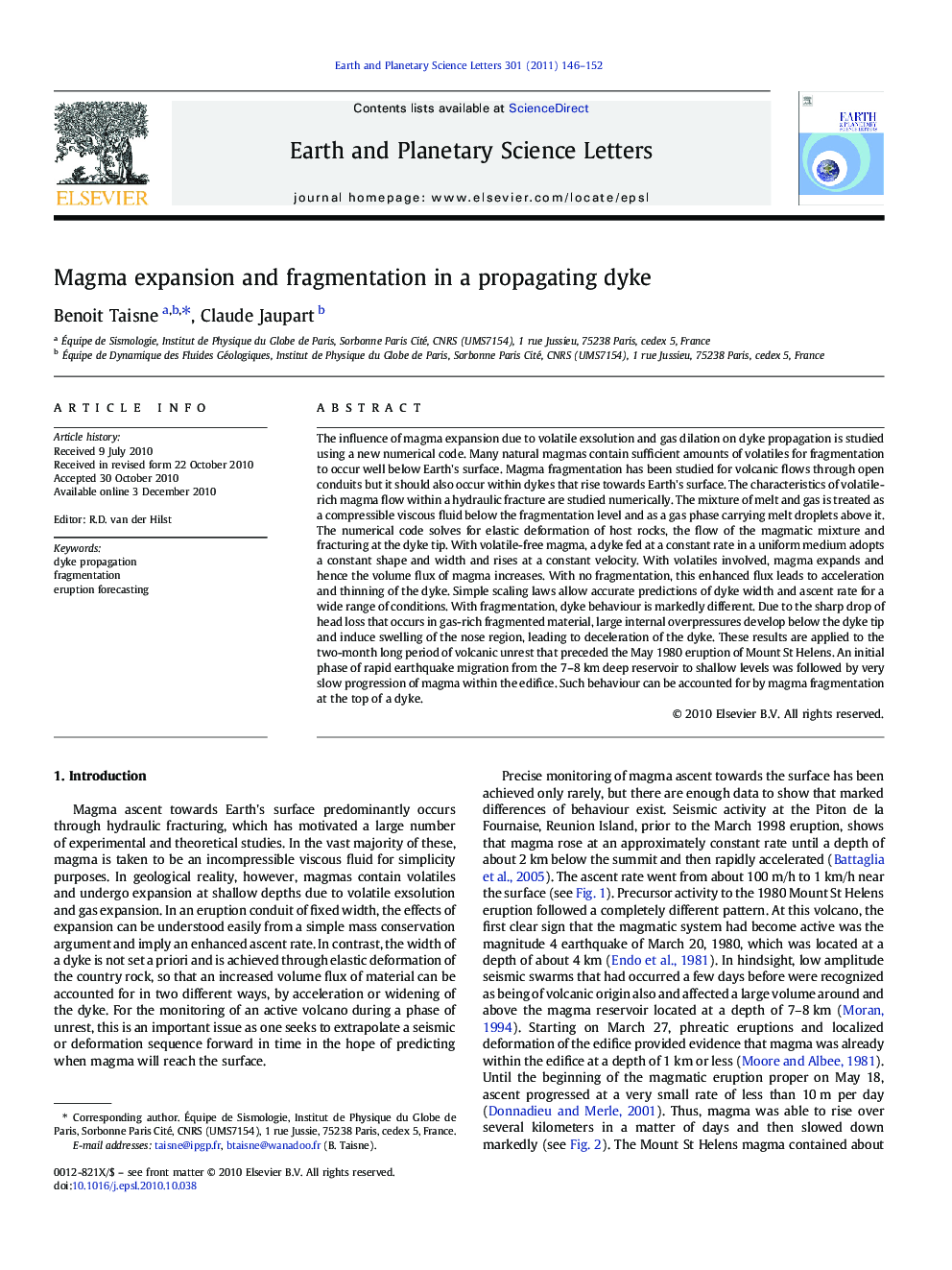| کد مقاله | کد نشریه | سال انتشار | مقاله انگلیسی | نسخه تمام متن |
|---|---|---|---|---|
| 6430845 | 1634838 | 2011 | 7 صفحه PDF | دانلود رایگان |

The influence of magma expansion due to volatile exsolution and gas dilation on dyke propagation is studied using a new numerical code. Many natural magmas contain sufficient amounts of volatiles for fragmentation to occur well below Earth's surface. Magma fragmentation has been studied for volcanic flows through open conduits but it should also occur within dykes that rise towards Earth's surface. The characteristics of volatile-rich magma flow within a hydraulic fracture are studied numerically. The mixture of melt and gas is treated as a compressible viscous fluid below the fragmentation level and as a gas phase carrying melt droplets above it. The numerical code solves for elastic deformation of host rocks, the flow of the magmatic mixture and fracturing at the dyke tip. With volatile-free magma, a dyke fed at a constant rate in a uniform medium adopts a constant shape and width and rises at a constant velocity. With volatiles involved, magma expands and hence the volume flux of magma increases. With no fragmentation, this enhanced flux leads to acceleration and thinning of the dyke. Simple scaling laws allow accurate predictions of dyke width and ascent rate for a wide range of conditions. With fragmentation, dyke behaviour is markedly different. Due to the sharp drop of head loss that occurs in gas-rich fragmented material, large internal overpressures develop below the dyke tip and induce swelling of the nose region, leading to deceleration of the dyke. These results are applied to the two-month long period of volcanic unrest that preceded the May 1980 eruption of Mount St Helens. An initial phase of rapid earthquake migration from the 7-8Â km deep reservoir to shallow levels was followed by very slow progression of magma within the edifice. Such behaviour can be accounted for by magma fragmentation at the top of a dyke.
Research Highlights⺠Vesiculation and gas expansion in magma leads to two different dyke behaviors. ⺠With no fragmentation, a dyke accelerates due to expansion. ⺠Fragmentation induces widening and deceleration of the dyke.
Journal: Earth and Planetary Science Letters - Volume 301, Issues 1â2, 3 January 2011, Pages 146-152